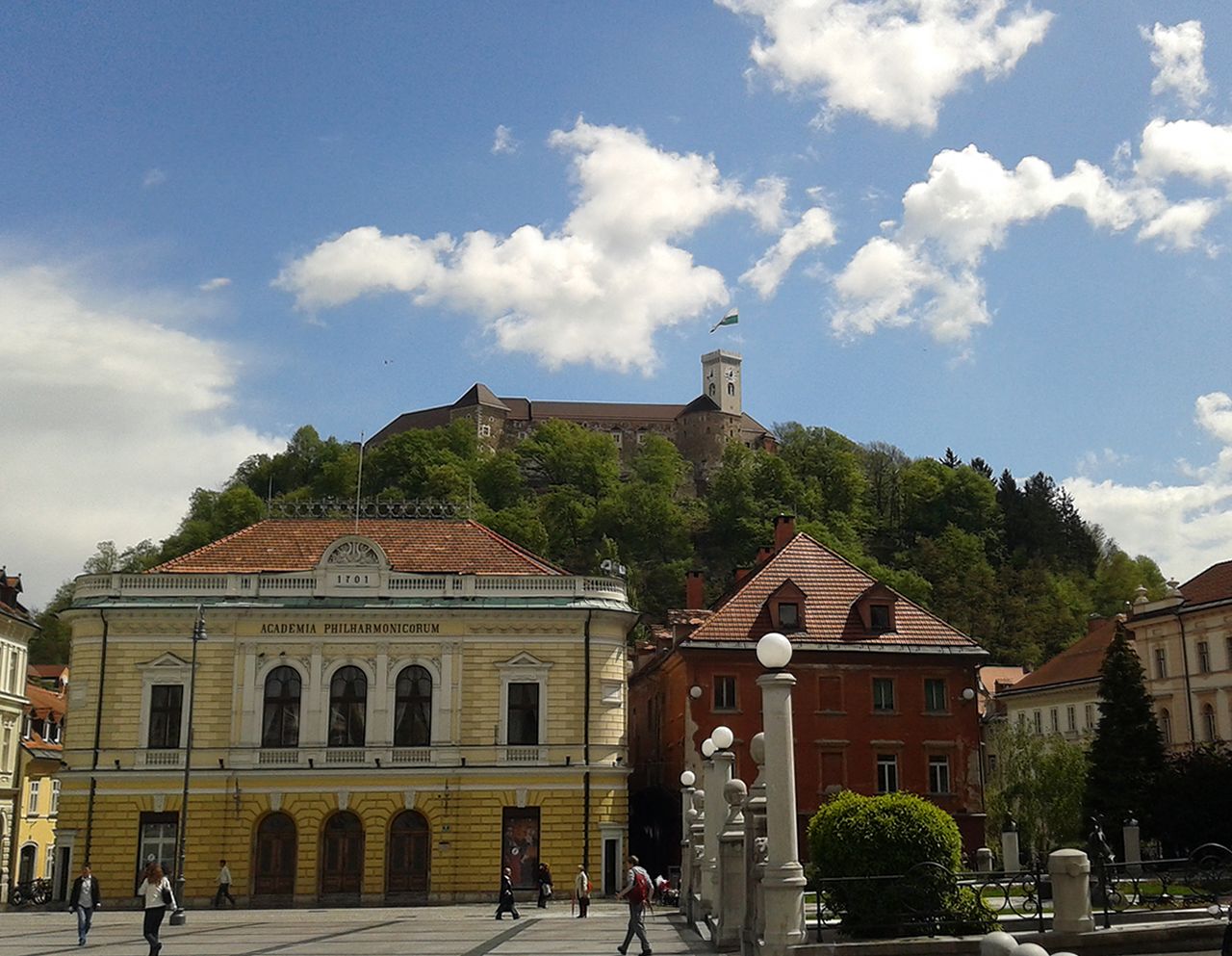Slovene Philharmonic

Past events
-
to
28 Jul 2024
3 Aug 2024
NorwayTrondheimNidarosdomen, Vår Frue kirkeTrondheim Internasjonale OlavsfestSlovene Philharmonic will be participating in the festival with its Slovene Chamber Choir. The choir, led by Urša Lah, will be perform on the 28th and the 31st of July and on the 3rd of August. The diverse programme of works will be rounded out with compositions by Slovenian composer Nana Forte. Promoted by Embassy of the Republic of Slovenia in Copenhagen.
-
19 Jun 2024
AustriaViennaMusikverein Great HallA live performance of Slovene Philharmonic Orchestra with conductor Douglas Boyd and pianist Alexander Gadjiev. The evening's programme includes "Bela krajina", a composition by Slovene composer Marjan Kozina. In collaboration with Embassy of the Republic of Austria in Slovenia, Slovene Philharmonic, Concerts Austria, Columbus, and Go!2025 Nova Gorica.
History
Academia Philharmonicorum
The Slovene Philharmonic traces its illustrious heritage back to the Academia Philharmonicorum, which was founded in Ljubljana in 1701 on the model of the Italian academies. The Academy chose for its emblem the organ of its patron, St. Cecilia, and its seal incorporated the motto Receat, mentique perennia monstrat (It entertains, and reveals eternal things to the mind). Its members were drawn from the aristocracy and from the town's intelligentsia, and according to reports by contemporary chroniclers, after several years of practice and with a great deal of enthusiasm the Academy began staging performing symphonic compositions by European, particularly Italian Baroque masters.
Habsburg empire
By the end of the 18th century the Academy ceased to exist. In 1794 the Philharmonische Gesellschaft (Philharmonic Society) was established, one of the first institutions of this kind within the Habsburg empire. It grew out of the string quartet of non-professional musicians. The number of musicians rose and in the beginning of the 19th century the well-versed amateurs and professional musicians were able to perform works by Haydn, Mozart and Beethoven. In its desire for international input into its ambitious activities the Philharmonic Society sought prominent European musicians as honorary members. The first was Joseph Haydn who gratefully presented the Society with a score of his Missa in Tempore belli. Next was Ludwig van Beethoven who sent a letter of thanks together with a transcript of the score for his Pastoral Symphony. At a later stage, honorary membership was gratefully accepted also by violinist Nicolò Paganini and by composer Johannes Brahms.
A very important phase in a three century-long history of the Slovene Philharmonic took place in the mid-19th century when a process of independent Slovene musical activities was initiated, leading to the foundation of the first independent Slovene Philharmonic Society (1908–1913) under the leadership of renown Czech conductor Václav Talich.
After the 2nd World war
In the period between the two wars following Talich's departure, the activities of the Slovene Philharmonic were formally abandoned, but there were several attempts at establishing orchestral body (amateur Orchestral Society of Musical Society and Ljubljana Philharmonic). However, in 1947, on the initiative of composer Marjan Kozina, conductor Samo Hubad and musicologist Vlado Golob, a resolution was passed on the formation of the Slovene Philharmonic, with a symphony orchestra, a mixed (until 1976) and youth choir (until 1952), a string quartet and an agency which organised concerts (this became independent in 1952). The first concert by the new Slovene Philharmonic Orchestra, led by Spanish conductor Salvador Bacarisse, took place on 13 January 1948.
In 1999 the Slovenian Chamber Chorus, which had been founded in 1991 as an independent body and led by Mirko Cuderman (assisted by Marko Vatovec), became part of the institution. Out of the orchetra grew also different chamber groups: Slowind Quintet, Tartini String Quartet and Slovene Philharmonic String Chamber Orchestra.
The first director of the institution was Marjan Kozina who was followed by Lucijan Marija Škerjanc, Marjan Lipovšek, Ciril Cvetko, Darijan Božič, Anton Kolar, Marijan Gabrijelčič, Boris Šinigoj and Mojca Menart. As new honorary members were among others elected composers Uroš Krek and Primož Ramovš, musicians Dubravka Tomšič-Srebotnjak and Marjana Lipovšek and conductors Milan Horvat and Carlos Kleiber.
Concert halls
The site of today’s Philharmonic building was for decades dominated by the old Stanovsko gledališče (State Theatre). In 1887 the old theatre building was burnt down and new concert building was built in 1891. The preparations for the tercentenary of the Slovenian Philharmonic and its predecessors (2001/02), brought about a thorough renovation of the entire building. The restored building was inaugurated on 25 September 2001, while on 8 January 2003, on the three hundredth anniversary of the first documented performances, the newly installed organ resounded in the Great Hall for the first time.
Today performances are held at Slovene Philharmonic halls and more often at Cankarjev dom Culture and Congress Centre. The Slovene Philharmonic Hall itself incorporates two venues - the greater Kozinova dvorana (Kozina Hall) and the smaller Osterčeva dvorana (Osterc Hall).
Kozinova dvorana (Kozina Hall)
- type of venue: concert hall
- main use: concerts, music theatre and dance performances, ceremonies
- seating: 507 seats, comprising 345 stalls, 162 balcony
- performing area: raised open platform 11.54m W x 9.8m D
- lighting: basic concert rig only
- sound: basic PA system only
- stage equipment: Diocesan Organ Workshop Maribor organ (1999) with 2,614 pipes and 40 registers
- backstage: dressing rooms accommodating 150-200 persons total, technical staff available
- climate control: air-conditioned and heated
- availability: available for hire
Osterčeva dvorana (Osterc Hall)
- type of venue: recital room
- main use: chamber music concerts, lectures, seminars, press conferences
- seating: 200 removable seats total
- performing area: flexible within total area 10m x 6m x 2.5m H to ceiling
- lighting: recessed ceiling lighting only
- sound: basic PA system
- backstage: facilities shared with Great Hall
- availability: available for hire
See also
- Slovene Philharmonic Orchestra
- Slovene Chamber Choir
- Slovene Philharmonic String Chamber Orchestra
- Slowind Quintet
- Tartini String Quartet

![Ljubljana Castle and Slovene Philharmonic, shot from the recently renewed Congress Square [Kongresni trg], 2012](/images/thumb/2/25/Ljubljana_Castle_2012_distant_view.jpg/576px-Ljubljana_Castle_2012_distant_view.jpg)